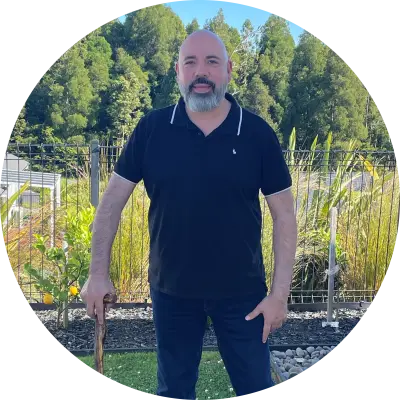Treatment offers real hope for people with primary progressive multiple sclerosis
Pharmac’s decision to widen access to the first funded treatment for primary progressive multiple sclerosis was the light at the end of the tunnel that Geno Sisneros very much needed.

Pharmac announced in September that more people would be able to get ocrelizumab (branded as Ocrevus), a medicine which can slow progression of the condition and significantly improve quality of life.
For Auckland marketer Geno Sisneros, that news came near the end of a tough year.
“I was diagnosed with primary progressive multiple sclerosis in December 2022,” he says. “It felt like the rug had been pulled out from under me and as you can imagine we didn’t really have a great Christmas.
“They call this the snowflake disease because it’s different for every person. When you’re diagnosed, you no longer know if you can plan for the future because the disease is unpredictable.”
Sisneros felt that his disability and symptoms were increasing following his diagnosis. “It became difficult to walk very far without my walking stick. You just feel very vulnerable. I wondered how I’d get around, and a big moment was when I resigned myself to the fact I’d have to get a walking stick to use outside or away from home.”
Geraldine MacGibbon, Pharmac’s Director Pharmaceuticals, says it was heartening hearing from people living with this condition about the difference ocrelizumab would make.
Multiple sclerosis is a chronic disease affecting the central nervous system. About 10% to 15% of people with multiple sclerosis experience the primary progressive form of the condition. For this group, the numerous sensory, cognitive, and physical symptoms progressively worsen over time, compared with people with the relapsing remitting condition where progression is intermittent.
Geno says treatment involves an infusion at hospital every six months, along with appointments with a neurologist and a follow-up MRI to gauge the impact of the medicine on the condition’s progress. It will take time to know for sure if it’s working, but he’s hopeful.
“Without this treatment, I didn’t have a lot of hope. Now I do.”


